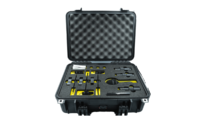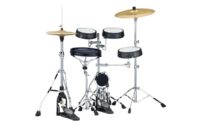Some time ago, we wrote about new exercise pads from Meinl. When testing the new Meinl Practice HCS cymbals (see: https://en.beatit.tv/beatit-test-meinl-practice-hcs-cymbal-pack/) and the low-volume Tama True Touch Training Kit (see: https://en.beatit.tv/beatit-test-tama-true-touch-training-kit/), it was obvious to us we were going to get our hands on those exercise accessories as well.
Today, we would like to show and describe the Stick & Brush pads, sized 6″ and 12″, and the Anika Nilles signature Split Tone pad.

1. Test
We tested the pads in our own recording studio. The sound was recorded using a pair of Bayerdynamic TG I53 stereo microphones and an RME ufx+ sound card with a preamp. We put the pads on a specially designed Meinl MPPS Practice Stand, which allows all types of pads with a thread diameter of 8 mm to be mounted on it. The Split Tone pad, due to its double-sided nature, can also be placed on a snare drum stand, which we also did during the test.
2. Basic specification of the pads
MEINL Stick & Brush – 6″ Practice Pad (SB508)
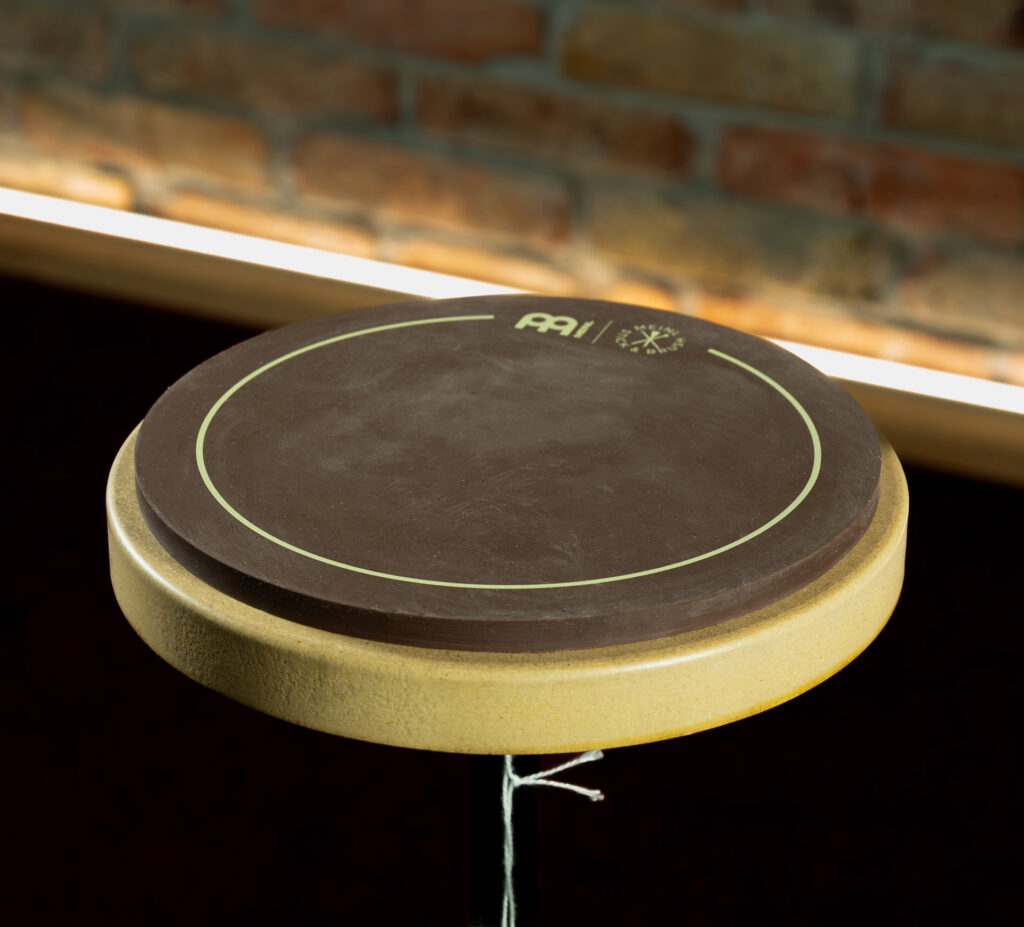
- 8 mm thread for mounting
- Foam covered bottom to prevent sliding
- Diameter: 6″
- Design: Stick & Brush
- Material: Medium-soft rubber surface
MEINL Stick & Brush – 12″ Practice Pad (SB509)
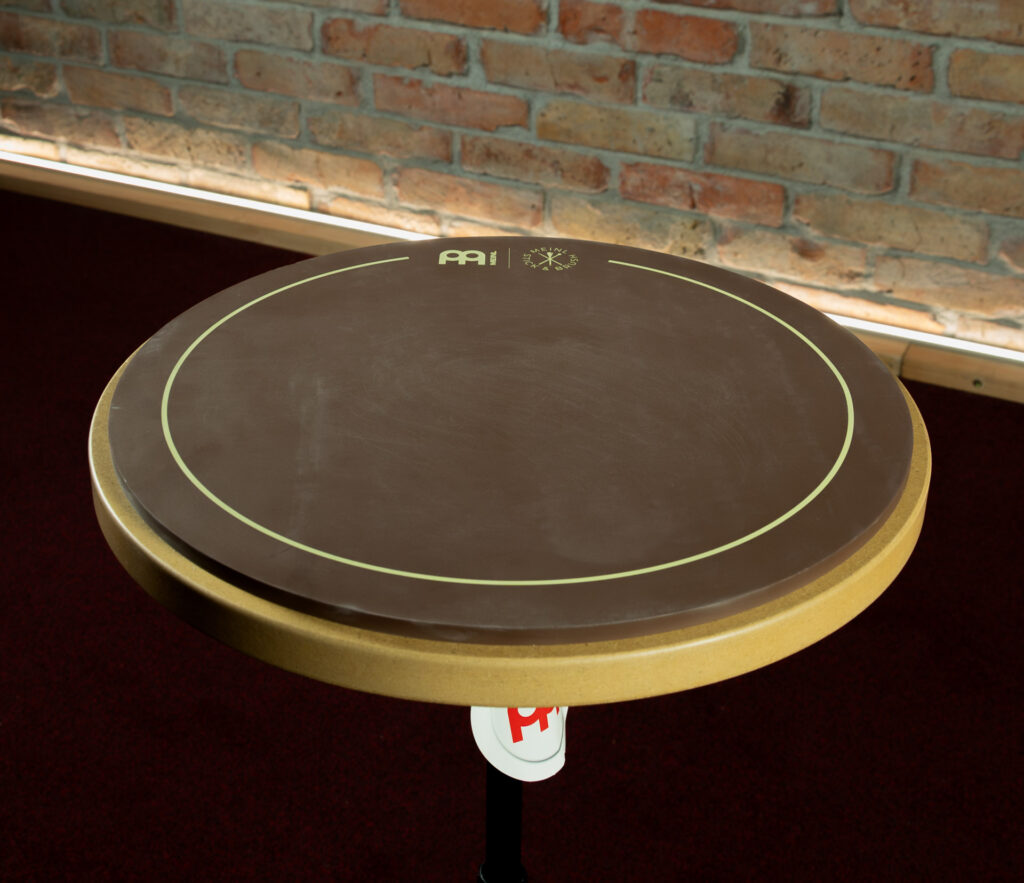
- 8 mm thread for mounting
- Foam covered bottom to prevent sliding
- Diameter: 12″
- Design: Stick & Brush
- Material: Medium-soft rubber surface
MEINL Anika Nilles Signature Split Tone Pad (MSTP)

- Diameter: 12″
- Material: Rubber and foam
- Primary pad (middle): Regular tone,
- Secondary pad (red dots): Higher tone
- Soft oval shape and backside: Muted tone
- Colour: Black/Red
- Designed by: Anika Nilles

3. Product and sound
In the case of practice pads, it is hardly useful to describe the sound. The pads should just be quiet. And this condition is, of course, met. Let us also add that, in the case of the Split Tone pad, we are dealing with three sections that, in addition to generating a specific bounce of the stick, produce various sounds. The middle section is the loudest, the red dots rank somewhere in between, and the other side of the pad (completely covered with foam) generates the quietest sounds. This design (3 zones) allows for more conscious practicing. For example, you can practice stroke precision by dividing quieter notes into one zone and accents into the next one. The other side of the pad, which is made of foam, can be used to develop the strength of our hands.
Wszystkie trzy modele są bardzo dobrze wykonane i wyglądają bardzo gustownie. Pady Stick & Brush w kolorystyce markowych pałek Meinl, a pad Aniki w czarnym kolorze z elementami czerwieni. Dodać należy, że do pada Split Tone producent dodaje czerwony pokrowiec.
All three models are very well made and look very tasteful. The Meinl Stick & Brush pads are coloured the same way Meinl sticks are, while the Anika Nilles pad is black with red elements. It should be added that the manufacturer adds a red cover to the Split Tone pad.
The prices of these pads are comparable to the competition’s offers and do not differ significantly from the standard.
Here’s the score achieved by the Meinl Stick & Brush pads and the Anika Nilles Split Tone pad:
 Appearance: 10
Appearance: 10
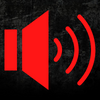 Sound: 10
Sound: 10
 Innovation: 10
Innovation: 10
 Price: 10
Price: 10
 Quality: 10
Quality: 10
TOTAL SCORE: 50
 Disadvantages – None
Disadvantages – None

In-between: None
 Advantages – very good build quality, three kinds of playing surfaces in the case of the Split Tone pad
Advantages – very good build quality, three kinds of playing surfaces in the case of the Split Tone pad
The total score is: 5

Enjoy our test video, in which you will hear and see the three practice pads being tested here.



